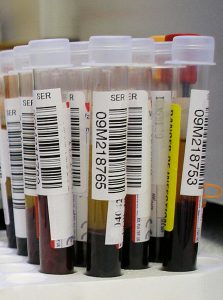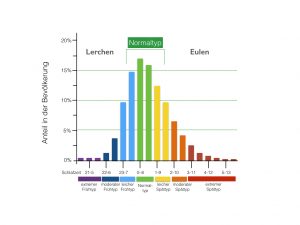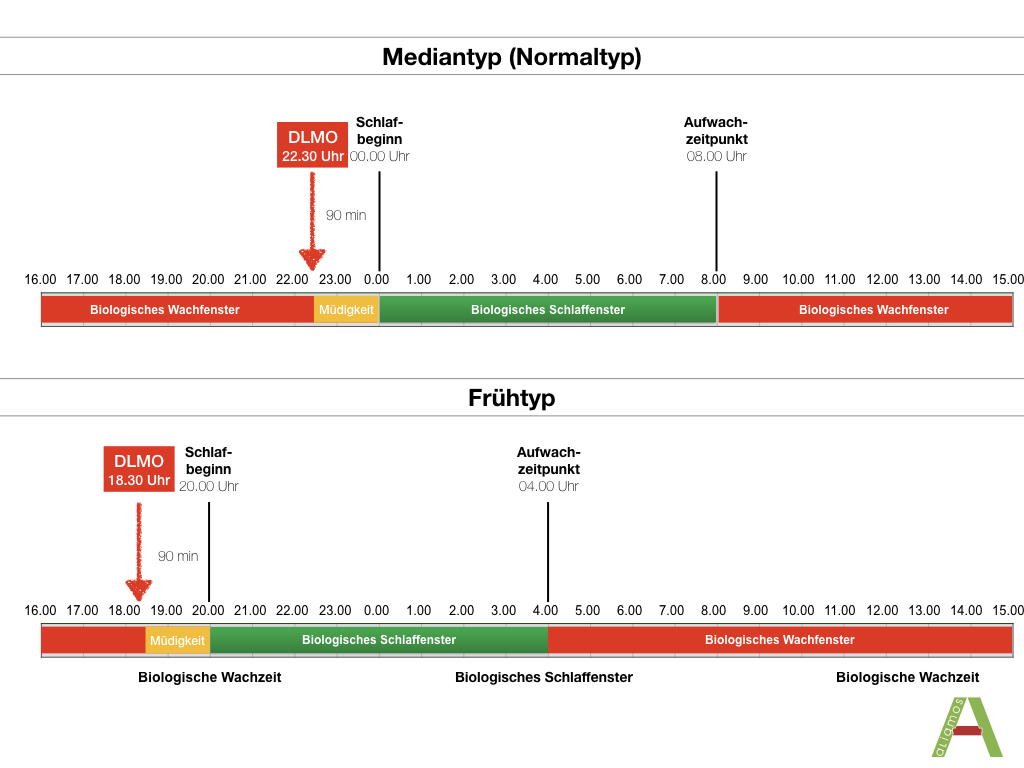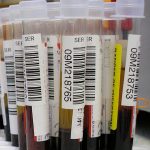asdf
Can I determine my chronotype with a blood test?
Update: Since April 2021, the new BodyClock RNA test based on hair roots or hair follicles has been available for chronotype determination. The analysis itself is the same as for the blood test. Only hair root samples are used here instead of a blood sample!
Shortly before the turn of the millennium, the French cancer specialist Francis Lévi discovered that cancer therapy can be carried out much more efficiently and with fewer side effects. He achieved this by coordinating the therapy with the patient’s internal clock. Several studies involving almost six hundred patients have shown that the daily dose of the chemotherapeutic agents tested can be increased by over thirty percent through chronotherapy, with significantly fewer side effects.

Until now, however, there were only two ways to determine the chronotype – a
questionnaire
or self-assessment.
I myself went to the University of Vienna back in 2003 to work with Prof. Dr. Wolfgang Marktl to find out what more precise methods could be developed to determine the chronotype beyond subjective assessments or answers. At that time, research in this area failed due to a lack of funding. As a potential sponsor, industry was still overwhelmed by the topic of “chronobiology”. There was a lack of acceptance.

The blood test
Today, 15 years and a Nobel Prize later, things look different. Prof. Dr. Achim Kramer and his team at the Charité in Berlin have now put it into practice. They developed a blood test that can identify the chronotype using 25 biomarkers in the blood
For their study, they first took blood samples from test subjects several times throughout the day and tracked the activity of around 20,000 genes. Here they isolated 25 genes that are either nocturnal, morning-active or evening-active. An adaptive algorithm is then used to determine a time at which the natural melatonin release exceeds a threshold value of 14.2pg/ml. This time is known as Dim Light Melatonin Onset, or ‘ DLMO’ for short. The DLMO therefore indicates the time at which the natural release of melatonin begins. Based on this, you can determine which chronotype this corresponds to. The following graphic shows exactly how this works. 
According to the research team, this also works if the test subject is woken up early in the morning by an external stimulus (alarm clock, person, etc.) contrary to their biological rhythm.
The scientists now want to prove the effectiveness of individually tailored chronotherapy in further studies by adapting therapies to patients’ individual internal time.
This is a revolutionary step, as chronotherapy can now be carried out much more efficiently than if self-assessment or questionnaires were the basis of such therapy. Ultimately, all forms of therapy can benefit in terms of their efficiency if the optimal therapy time for the patient based on the respective chronotype is known.
Together with the project group led by Prof. Achim Kramer, our company aliamos GmbH is also pursuing the goal of optimizing staff deployment times and shift times with the help of employee chronotypes determined by blood tests. We have already achieved initial success here.
What effect can this blood test have outside of medicine?
So can this type of chronotype determination via a blood test also have positive effects on the economy, tourism and education? The answer is definitely “YES”. Of course, a blood sample is always an intervention on a person and requires their consent. It also costs money. But it is about far more than just determining a chronotype. This blood test shows that chronobiology has arrived in conventional medicine. A chronotype is no longer just an imaginary construct or a matter of faith, because some people feel it and others don’t.
It is not necessarily necessary for companies, educational institutions etc. to subject all employees and students to a blood test in order to benefit from knowledge about the internal clock. First of all, it is important that decision-makers recognize the effects of including individual chronotypes in OHM and HRM as an opportunity to actively influence absenteeism, error costs and fluctuation. Absenteeism, cost shortfalls, staff turnover and even a shortage of skilled workers are the buzzwords when it comes to considering the internal clock within processes in companies, educational institutions or tourism. The integration of chronobiology into occupational health management will only be a matter of time. The AOK Bayern, for example, will inform decision-makers from its member companies throughout Bavaria in detail about the topic as part of its information series “BGM im Dialog” and has invited me as an expert for a keynote speech.
How do you go about it?
The main problem is that there are hardly any experts on the market who are able to understand the connection between chronotype and economic processes. As a result, there is a lack of opportunities to provide companies with targeted advice in this area. On the one hand, there are chronobiologists, who naturally have their expertise in the field of chronobiology, and on the other hand, there are management consultants, business experts, HR experts, etc.. However, the majority of the latter have not even heard of chronobiology.
In 2003, I myself was the first business economist ever to deal with chronobiology. And even today, after 15 years, I am not aware of any expert in the D-A-CH region with sound business management know-how who can also demonstrate in-depth knowledge of chronobiology. But this will change. I predict that chronobiology will be part of the standard repertoire of large, innovative management consulting agencies and health insurance companies in 5-10 years.
We will see whether a blood test will then be part of the classic application documents. But as I said, that’s not the point.
Matching presentations and seminars:
Chronobiology in human resource management
Chronobiology – living with your inner clock
Sources:
http://www.scinexx.de/wissen-aktuell-22899-2018-07-03.html
https://www.jci.org/articles/view/120874/pdf
https://www.ncbi.nlm.nih.gov/pubmed/16884842/
By GrahamColm [CC BY-SA 3.0(https://creativecommons.org/licenses/by-sa/3.0)], from Wikimedia Commons

